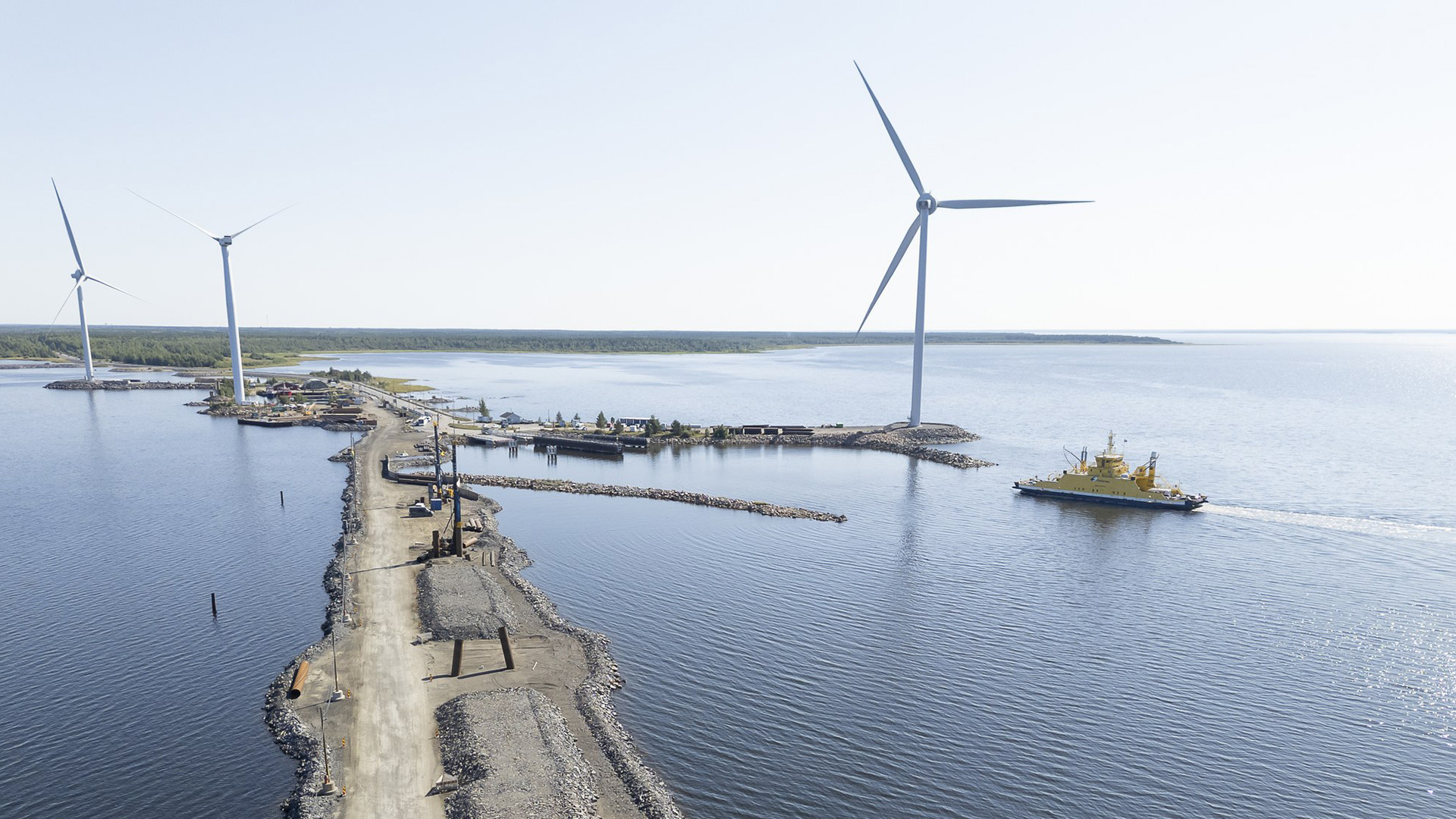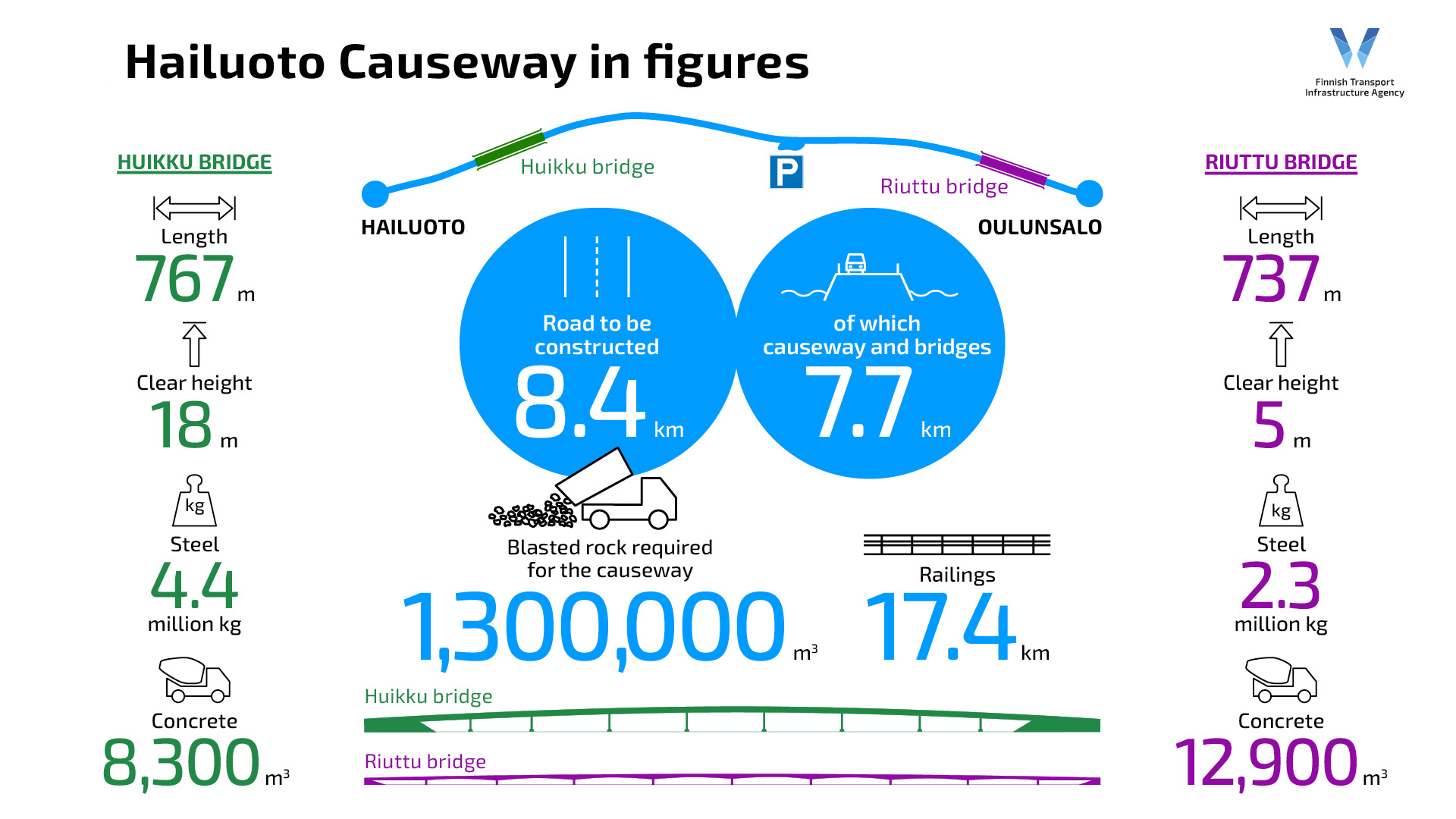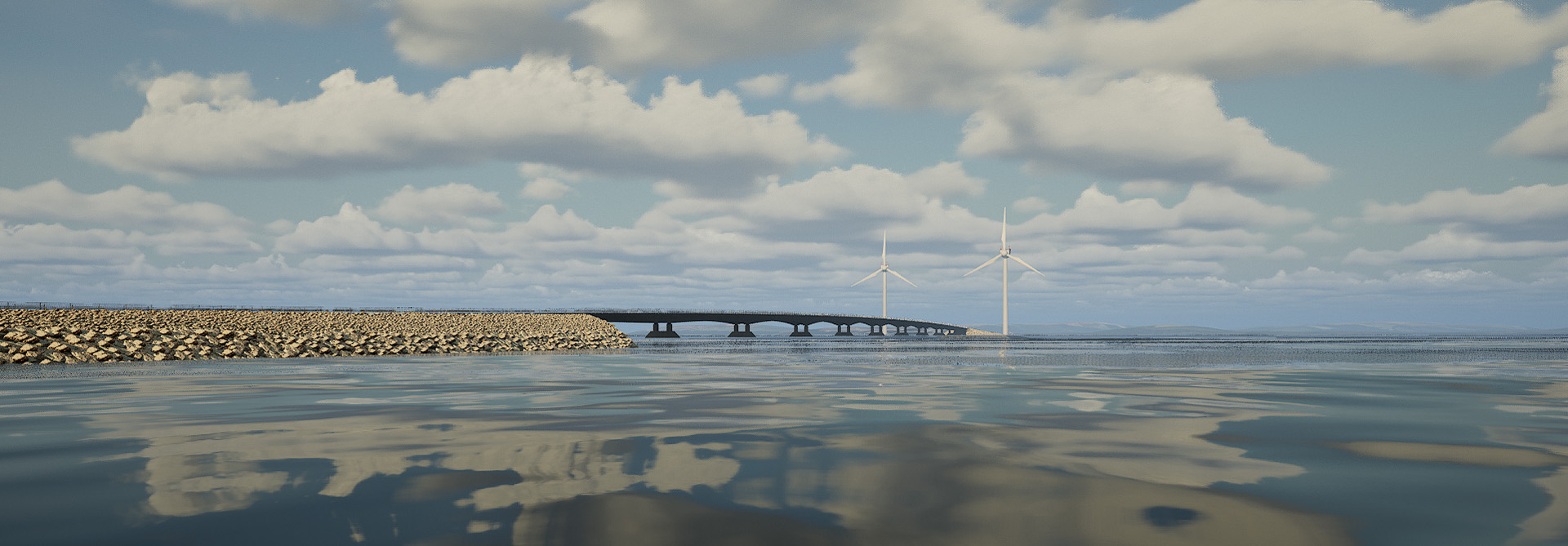Hailuoto is located approximately 50 kilometres from Oulu, and it is the largest island in the Bothnian Bay. The distance between the island and the mainland is approximately seven kilometres. Hailuoto is a municipality in its own right and the only archipelagic municipality in Northern Ostrobothnia. A ferry service connects Riutunkari in Oulu to Huikku on Hailuoto. The causeway currently under construction will replace the ferry connection once completed.

Background to the project
Hailuoto is accessed by a regional road (No 816), which begins in Kempele, passes through Oulunsalo and the municipal centre of Hailuoto and ends in the western part of Hailuoto in Marjaniemi. The route also includes a 6.9-kilometre ferry crossing, which takes approximately 25 minutes. Depending on ice conditions, the road manager also maintains an ice road between the island and the mainland in the winter. Approximately 60% of journeys originating on Hailuoto are estimated to have Oulu as their destination.
The ferry schedule and lack of night-time transport make Hailuoto less accessible than the rest of the region. The ferry service is not meeting its economic objectives, and its annual operating and maintenance costs amount to approximately EUR 6 million. Continuing to operate the ferry service would have required investments in new ferries and more services over the next few years.
Objectives and benefits of the causeway
The causeway will improve Hailuoto’s national and regional accessibility and make travelling to Hailuoto easier. It will enable better passenger and goods transport links to the island and local businesses, and widen the commuter area for Hailuoto residents.
The causeway will make Hailuoto equal with other municipalities in the Oulu region in terms of transport. The planned capacity of the causeway is also able to accommodate a considerably greater increase in transport volumes than forecast. The causeway enables meeting the objectives set for private and public transport, logistics and pedestrian and bicycle traffic.
Implementation of the project
The project is implemented using alliance model. The alliance partner group consists of the FTIA as the contractor, GRK Finland as the developer and AFRY Finland and A-Insinöörit (f.k.a. Plaana and Ponvia) as the designers.
With the signing of the alliance agreement in the spring of 2022, the development phase of the project started. During the development phase, the project's result and cost targets and the implementation schedule were defined. The development phase ended when the FTIA decided to move to the implementation phase in April 2024.
The construction work of the Hailuoto causeway started in May 2024, and will take about three years in total. The objective is to open the causeway to traffic at the end of 2026.

The effects of the project on the environment
The causeway has been designed to fit in with its surroundings as well as possible. A wide range of new environmental surveys and flow modelling were carried out and previous studies consulted during the planning process. The area’s vulnerable ecosystem has been taken into account in the designs. The challenging sea conditions were also factored into the structural solutions.
Environmental monitoring is carried out throughout the project according to a separate monitoring plan. In addition to monitoring water turbidity during the construction, the plan includes monitoring water quality as well as benthic fauna, fisheries, nesting birds, beach erosion and vegetation.
Costs of the causeway
The authorization given to the project by the Finnish Parliament is EUR 121 million.
Profitability of the project
The project is socioeconomically viable. The benefit-cost ratio of the project (1.64) over a period of 30 years is positive, ie the money invested in the project is returned to society through the benefits achieved.

